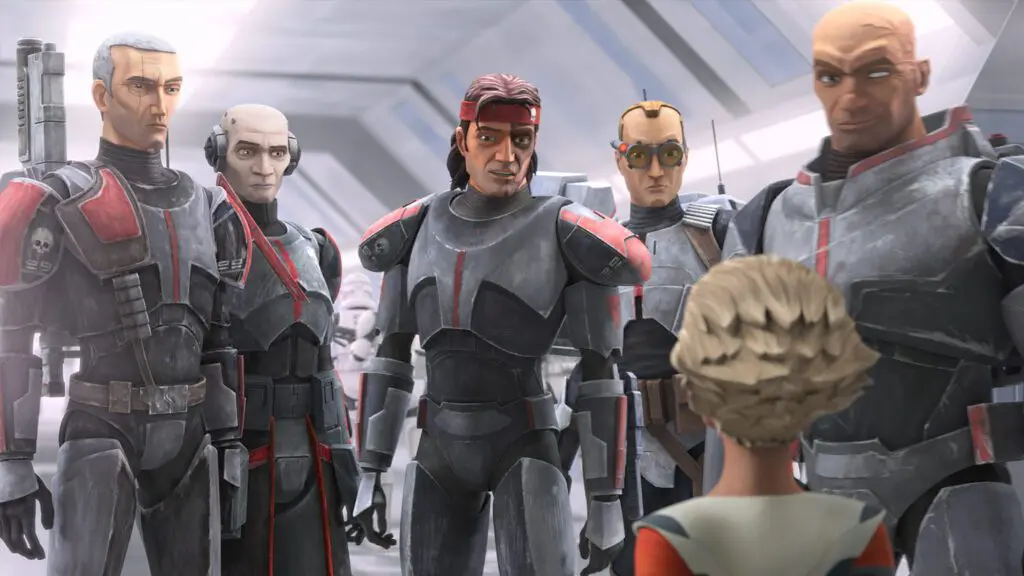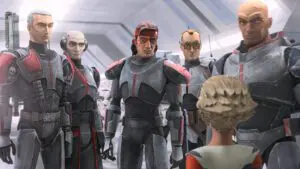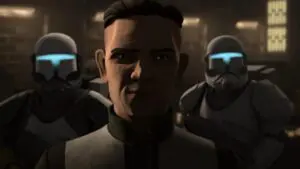Summary
“Aftermath” admirably continues the legacy of The Clone Wars in another treat for Star Wars fans.
This recap of Star Wars: The Bad Batch season 1, episode 1, “Aftermath”, contains spoilers.
The Clone Wars is easily the best bit of Star Wars media that nobody outside die-hard fans has ever seen, so there’s no surprise, really, that Lucasfilm and Disney are so keen to continue to cash in on its aesthetic, characters, and style. We’ve already had the incredibly well-received final season on Disney+, and during that season we enjoyed a backdoor pilot for the latest project, Star Wars: The Bad Batch. Now May 4 marks the beginning of what is, essentially, an answer to what happens to the clones of the Clone Wars when there’s no longer a war to fight. Positioned between Revenge of the Sith and A New Hope, the 70-minute premiere, “Aftermath”, makes it clear that the thematic focus is going to be on Hunter, Crosshair, Tech, Wrecker, and Echo trying to find a place in an Empire that no longer has use of their talents.
Like The Mandalorian, The Bad Batch episode 1 seems geared pretty explicitly towards established fans who’ll recognize the significance of Order 66 taking place from the perspective of Depa Billaba (Archie Panjabi) and Caleb Dume (Freddie Prinze Jr.), who’ll be excited to see a young Saw Gerrera (Andrew Kishino), and will bristle when Tarkin (Stephen Stanton) arrives on Kamino. This isn’t to say that “Aftermath” can’t be enjoyed on its own terms, since it gives plenty of focus to the individual members of Clone Force 99 and their particular quirks, as well as tying them intimately to a new character, Omega (Michelle Ang), a young girl who quickly adds some emotional stakes.
The only real downside of Star Wars: The Bad Batch season 1, episode 1 is that it’s too long – not too too long, but objectively too long, like every sequence is probably a couple of minutes too long. It covers a lot of ground, admittedly, from the initial execution of Order 66 to Kamino and a combat simulation, and then a full-on defection after the Bad Batch – with the exception of turncoat member Crosshairs – figure out that Tarkin is trying to phase out the Clone Army using their defective nature as a scapegoat. Seeing Depa Billaba and Caleb Dume and Saw Gerrera is lots of fun, but it’s also there mostly to be fun, and not really to set up the overarching plot. That stuff could have been established in a much tighter episode and would have probably been better for it, dramatically.
Nevertheless, that kind of thing is what people wanted from The Clone Wars and, since this show is so similar, it’s probably also what they want from The Bad Batch. Everyone involved seems keen on giving it to them, perhaps most especially Dee Bradley Baker, whose vocal performances are varied enough that if you didn’t know it was just one guy voicing most of the major characters, you’d never guess. The legacy of The Clone Wars’ animation and storytelling style is felt so strongly here that it’s hard not to be excited about where the show might go, and the prospect of fleshing out a part of the timeline that hasn’t been as well-explored as others seems as good a justification for The Bad Batch as anything else.




